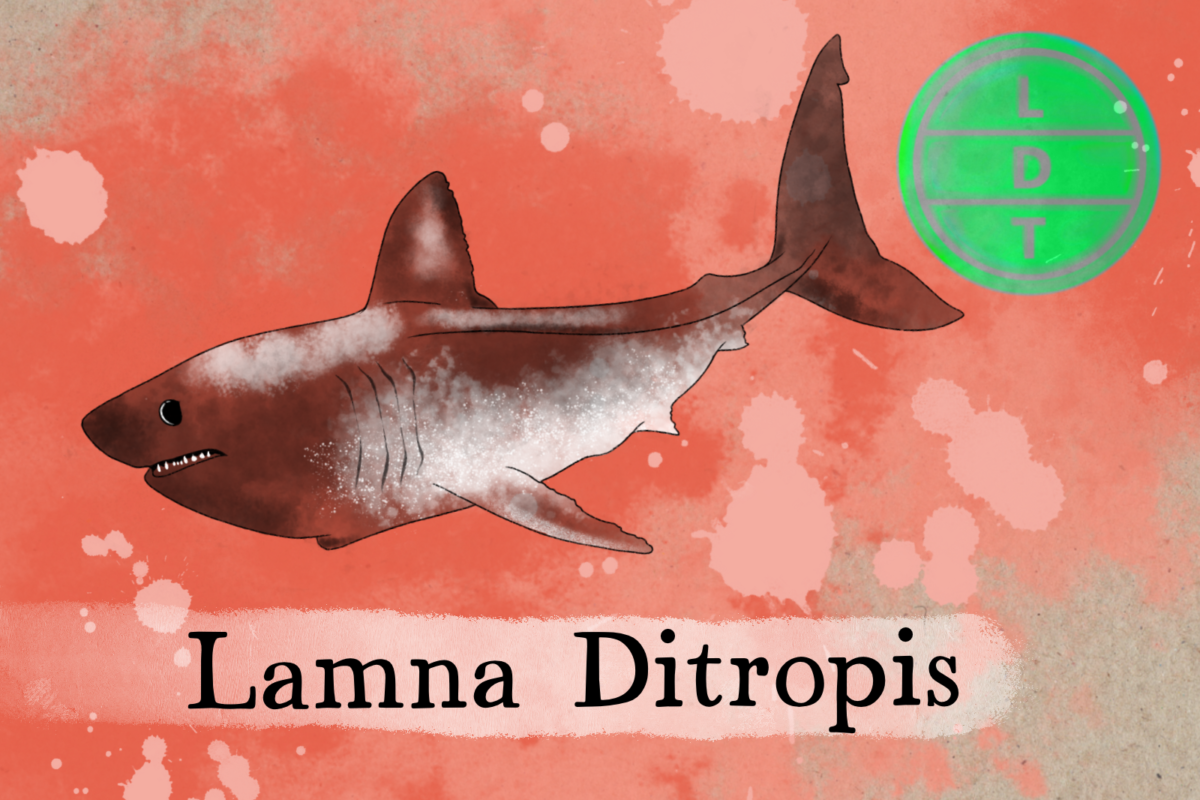“…and today we’re talking about an Alaskan with a taste for salmon, but I repeat myself. But more on that later.”
As a mini me to its cousin the great white, the salmon shark seems like an adorable football-shaped friend in the sea. But these seven footers are no small fries. These sharks are born warriors and may be among the few true life long carnivores. Some fish are born lucky, but the salmon shark doesn’t need luck, and that’s what makes it strong, in Life, Death, and Taxonomy.
Description of the Salmon Shark
- Looks like a mini great white shark
- It has a thick, football-shaped body with a short, pointed snout
- It looks sporty but buff
- It has a dark grey back and a white belly – countershading
- Large, dead, black eyes… like a doll’s eyes
- It’s pectoral and dorsal fins are long
- All in all a pretty intimidating looking shark
Measure Up
Welcome to the beloved Measure Up segment. The official listener’s favorite part of the show! The part of the show when we present the animal’s size and dimension in relatable terms through a quiz that’s fun for the whole family. It’s also the part of the show that’s introduced by you when you send in audio of yourself saying, singing, or chittering the words Measure Up into ldtaxonomy at gmail dot com. We do have a new Measure Up intro from Melissa!
Length
- 200 and 260 cm (6.6–8.6 ft)
- How many Salmon Sharks go into the depth of the deepest plant roots?
- Hint: The roots belong to the Shepherd’s tree (Boscia albitrunca), which is native to the Kalahari Desert in Southern Africa. Root depth depends on their elevation and distance from the water table. In saturated lowlands, roots remain shallow, but in highlands, they extend until they reach moisture.
- 26.7 sharks. Roots grow more than 70 meters, or 230 feet.
Weight
- 220 kg (485 lb)
- How many of the heaviest king salmon, also called chinooks, go into the weight of a salmon shark?
- Hint: The heaviest on record was caught in a commercial fishing trap in Alaska in 1949.
- 3.8 salmon. The largest one was 126 lbs.
Fast Facts about the Salmon Shark
- Range: Upper pacific from China and Siberia to the Western U.S.
- Diet: Apex predator – salmon, squid, herring, walleyes, medium-sized fish basically.
- Behavior:
- Has something called homeothermy, which allows it to regulate its body temperature, something most fish, who are cold-blooded, can’t do.
- It all has to do with hot blood heating colder blood so it keeps temperatures level. I refuse to get into it.
Major Fact: Omelets for Babies
Like many sharks, salmon sharks are ovoviviparous, which means that they give birth to live young. However, sharks don’t have sophisticated systems to nourish embryos in the womb like mammals’ umbilical cords in an amniotic sac.
When the embryos hatch in the mothers womb, they need to eat to survive, but what is there to eat, when you’re literally surrounded on all sides by shark?
You eat shark caviar.
Salmon sharks are oophagous, which means that unborn embryos feed on ova that’s produced by their mother. They grow a set of sharp teeth before they are even born, which allows them to enjoy eggs benedict before exiting the womb.
However, the benedict goes from egg to Arnold when the womb gets crowded. The largest shark pups will grow their teeth first, which allows them to pick an unfair fight with their siblings.
Before they are even born salmon sharks go to war, eating other embryos.
For whatever reason, they stop when there are two to five pups left.
Ending: So keep swimming, keep your stomach temperature level, and remember that it’s never too early to get a jumpstart on sibling rivalry like the salmon shark here in LDT.

